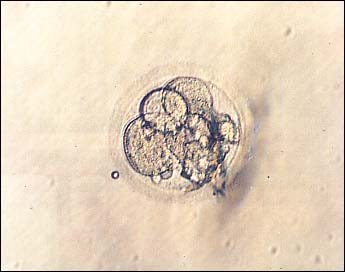천문학자들은 몇 몇 은하들사이의 거리를 측정하는 새로운 방법을 알게 될 것이다.
이는 대단히 필요한 일이다. 은하의 거리에 관한 정확한 지식없이 우리들은 은하가 얼마나 떨어져 있는지, 우주가 얼마나 빨리 팽창하고 있는지를 확실하게 말할 수 없다. 이 이야기는 우리가 우주의 나이에 대해서도 정확히 알수없다는 것을 뜻한다. 일부 천문학자들은 우주의 나이를 약 1백억년 정도로 보고 또 다른이는 2백억년쯤 되었을 것이라고 얘기한다. 상당한 차이가 아닐 수 없다. 이는 우리로 하여금 우주의 핵심적 특성과 그것의 운명에 대해 확실히 알지 못하게 만들고 있다.
지구로 부터 은하까지의 거리를 결정하는 최선의 방법은 은하내에 '케페이드 변광성'이라고 불리우는 별의 유형을 찾아내는 일이다. 그 별의 빛은 일정주기로 밝아졌다가 어두워진다. 그러한 주기를 측정함으로써 우리는 그 별의 실제 광도를 계산할 수 있다. 주기가 길수록 광도는 커진다. 어둡게 보일수록 그별은 멀리 있다. 겉보기에 어두운 정도로 부터 별이 얼마나 떨어져 있나를 계산할 수 있다.
케페이드 변광성은 지구에서 가장 가까운 30여개 은하들의 거리를 매우 정확하게 계산할수 있게해준다. 예를 들어 마젤란성운은 15만광년의 거리에 있고, 안드로메다은하는 2백20만광년 밖에 떨어져 있다. 가까운 30여개은하를 벗어나면 케페이드 변광성이 너무 흐려서 찾아낼수 없다. 그리고 30개는 많은 수가 아니다. 우주에는 수십억개의 은하들이 있는것이다. 더 멀리 떨어진 은하의 거리를 결정해주는 방법들이 있기는 하지만, 케페이드 변관성을 이용한 측정방법만큼 정확하지는 못하다. 예를 들어, 케페이드보다 훨씬 밝은 거성들이 있어서 그 거리의 6배되는 곳에서도 관측되어진다. 정말로 밝은 별은 태양보다 약 1백만배나 밝은데, 그 별의 어두운 정도로서 떨어진 거리를 알아 낼 수 있다. 그러나 태양보다 1백만배 정도 밝은 별이 있다고 하는것은 추측일 뿐이다. 또한 모든 은하가 그런 거성을 가지고 있는 것은 아니다.
우리는 또한 매우 멀리 떨어져 있는 몇 몇 은하들에서 이따금 초신성을 찾아낸다. 왜냐하면 초신성은 우리의 태양의 수백억배의 밝기로 빛나고 있기 때문이다. 그러나 우리는 다시 그 초신성의 실제광도가 얼마나 되는가를 추측해야 하며 또 그들은 여기저기 산재해 있는 은하들에서만 나타난다.
결국 우리는 은하 전체의 밝기로 그 거리를 측정할수 밖에 없다. 왜냐하면 은하의 거리는 너무 멀어 보통 별은 물론이고 가장 밝은 별도 볼수 없기 때문이다. 또한 초신성은 흔한게 아니다.
그리고 모든 은하의 크기가 같다면 밝기로 거리를 측정하는것은 좋은 방법이 될것이다. 허나 어떤 은하는 다른것에 비해 백만배나 크다. 따라서 전체적인 밝기로 거리를 잰다는것은 대단히 모험적인 것이다. 그러한 위험이 우리로 하여금 '구상성단'을 떠올리게 한다. 분명히 모든 은하에는 구형으로 꽉들이찬 별의 집단이 존재한다. 이같은 구상성단의 크기는 다양하다. 가장 작은 것은 수만개의 별로 이루어져 있으며 가장 큰 것은 백만개정도의 별로 이루어져 있는것같다.
우리의 은하수도 관측할 수 있는 2백여개의 구상성단과 먼지구름으로 가려져 있는 1백개 이상의 구상성단을 포함하고 있다. 안드로메다 은하도 이러한 구상성단을 비슷한 수만큼 가지고 있으며, 역시 근처의 다른 은하들에서도 구상성단은 발견되어 왔다.
구상성단은 일정한 최대치 이상으로는 커질수가 없다. 왜냐하면 만일 그 크기가 약간이라도 더 클 경우 바깥층 별들이 안쪽 별들의 중력당김에 의해 단단히 뭉쳐지지 못하여 결국 성단에서부터 떨어져 나갈 것이기 때문이다.
만약 그러하다면 가장 밝은 구상성단들은 언제나 같은 전체광도를 가지게 될 것이다.
캐나다 해밀톤에 있는 '맥매스터'대학의 천문학교수인 윌리엄 해리스씨는 최근에 거리가 알려져 있는 근처은하의 구상성단에 대해 세밀한 연구를 했다. 예컨대 그는 구상성단의 겉보기 광도를 결정했고 거리로부터 그들이 실제 우리 태양에 비해 얼마나 밝은 가를 계산할 수 있었다.
그는 실제로 어떠한 은하에서도 가장 밝은 구상성단들은 꼭 같은 광도로 빛나고 있다는 사실을 보고하였다.
이말은 만약 우리가 거리를 잘 알지 못하는 어떤 은하에서 구상성단을 발견하여 그 밝기를 결정할 수 있다면 그 광도와 실제광도를 비교, 거리를 계산할 수 있다는 것을 의미한다.
하지만 이 사실이 우리에게 새로운 어떤 것을 제공해주는 것 같지는 않다. 하나의 밝은 구상성단의 밝기는 가장 밝은 초거성의 단일별의 밝기정도가 되고 우리는 그 은하까지의 거리를 알기 위해 이미 그러한 초거성의 밝은 별을 이용한다. 그러나 구상성단의 잇점은 그들이 거의 모든 은하에 존재하며 초거성은 단지 일부 은하들에서만 발견된다는 점이다. 다음으로, 만일 해리스씨가 옳았다면 가장 밝은 구상성단들의 광도는 최고로 밝은 개개의 초거성보다는 더 안전하게 신뢰되어질 수 있다.
그러므로 구상성단 이용법은 가장 가까운 6천개 은하들의 믿을만한 거리값을 제공해 줄 것이다. 이것은 현재상황에서 중요한 진보가 되겠지만 여전히 수십억개의 더 많은 은하들이 존재하고 있다. 우리는 더 많은 측정자(방법)를 계속해서 찾아 나서야만 한다.
A stronomers may have a new way of measuring the distances of some galaxies.
This is badly needed. Without an accurate knowledge of galactic distances, we can't tell for sure how far apart the galaxies are and how quickly the universe is expanding. This means we can't be very precise about how old the universe is. Some astronomers say the universe is 10 billion years old, and some say 20 billion years old- a substantial difference. This makes us uncertain of other key features of the universe and of what its ultimate destiny may be.
The best way of determining a galaxy's distance from Earth is to detect a type of star in it called a "Cepheid variable." Its light grows brighter and dimmer over a certain period. By measuring the period we can calculate how luminous it really is - the longer the period, the greater its luminosity. The dimmer the star apparent dimness, we can calculate just how far away it is.
The Cepheids allow us to calculate the distance of the 30 nearest galaxies quite accurately. The Magellanic Clouds are 150,000 light-years away, for instance, and the Andromeda galaxy is 2,200,000 light-years away. Beyond those 30, though, the Cepheid variables become too dim too see at all, and 30 isn't many. There are billions of galaxies.
There are ways of determining the distance of galaxies that are farther off, but they're not as good as the Cepheid method. There are giant stars, for instance, that are much brighter than Cepheids and can be seen at six times the distance. A really bright star is about a million times as bright as the sun, and from the degree of its dimness we can tell how far away it is. But determining whether a star is a million times as bright as the sun is a matter of guesswork. Also, not every galaxy contains these giant stars.
We also can detect supernovas occasionally in some galaxies, even those that are very far away, because a supernova will shine with a light that may be tens of billions of times as bright as our sun. But again we have to guess at how bright the supernova actually is, and they appear only in scattered galaxies here and there.
Finally, we are reduced to judging the distance of a galaxy by its total brightness because it is too far away to see any ordinary stars in it, even the brightest, and super-novas are rare. This would be a good method of determining distances if all galaxies were of the same size, but some are a million times as large as others, and so judging distance by overall brightness is very risky.
That brings us to "globular clusters." There exist, apparently in every galaxy, groups of stars that are packed tightly together in a spherical shape. Such globular clusters come in various sizes. The smallest may consist of a few tens of thousands of stars, and the largest may consist of a million stars.
Our own Milky Way galaxy contains about 200 of them that we can see and perhaps 100 more that are hidden by dust clouds. The Andromeda galaxy contains a similar number of these globular clusters, and they have been detected in other nearby galaxies too.
It may be that globular clusters can only reach a certain maximum size because if they were any bigger the outermost stars would not be held firmly enough by the gravitational pull of the inner ones and would eventually separate from the cluster.
If that were so than the brightest globular clusters would always have the same total brightness.
William Harris, an astronomer at McMaster University in Hamillton, Canada, has recently made a careful study of the globular clusters in nearby galaxies whose distance is known. He determined the apparent brightness of the globular clusters and from their distance he could calculate how luminous they really are in comparison to our sun, for instance. He reported that, indeed, the brightest globular clusters, in any galaxy, shone with about the same luminosity.
This means that if we can make out globular clusters in some galaxy whose distance we're not certain of and determine the brightness of the brightest of them, we can compare that with the luminosity they really have and calculate the distance.
In a way, it might not seem this gives us anything new. A bright globular cluster is about as bright as the brightest supergiant single stars, and we use those super-bright stars already to tell galactic distances. The advantage of the globular clusters, however, is that they probably occur in every galaxy, and supergiants only in some. Secondly, if Harris is correct, the brightness of the brightest globular clusters can be relied on more safely than the brightness of the bright-est individual supergiants.
The globular cluster method may, there-fore, give us reliable distances for the near-est 6,000 galaxies. This will be an important improvement over the present situation, but there are still billions more galaxies. We must continue to look for additional yard-sticks. (c) 1988, Los Angeles Times Syndicate
















